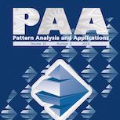High-frequency wideband cellular communications over mmWave and sub-THz offer the opportunity for high data rates. However, it also presents high path loss, resulting in limited coverage. High-gain beamforming brought by the antenna array is essential to mitigate the coverage limitations. The conventional phased antenna arrays (PAA) cause high scheduling latency owing to analog beam constraints, i.e., only one frequency-flat beam is generated. Recently introduced joint phase-time array (JPTA) architecture, which utilizes both true-time-delay (TTD) units and phase shifters (PSs), alleviates analog beam constraints by creating multiple frequency-dependent beams for scheduling multiple users at different directions in a frequency-division manner. One class of previous studies offered solutions with "rainbow" beams, which tend to allocate a small bandwidth per beam direction. Another class focused on uniform linear array (ULA) antenna architecture, whose frequency-dependent beams were designed along a single axis of either azimuth or elevation direction. This paper presents a novel 3D beamforming design that maximizes beamforming gain toward desired azimuth and elevation directions and across sub-bands partitioned according to scheduled users' bandwidth requirements. We provide analytical solutions and iterative algorithms to design the PSs and TTD units for a desired subband beam pattern. Through simulations of the beamforming gain, we observe that our proposed solutions outperform the state-of-the-art solutions reported elsewhere.
翻译:暂无翻译




